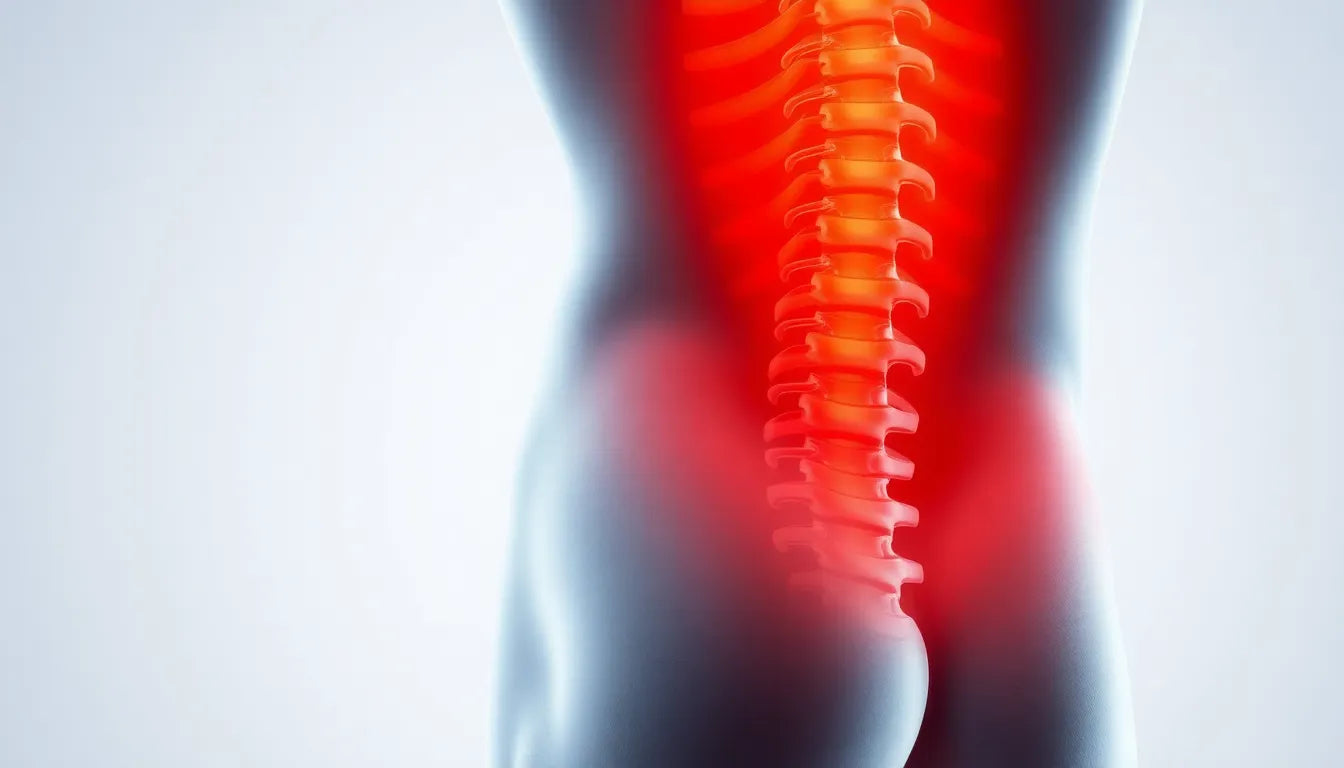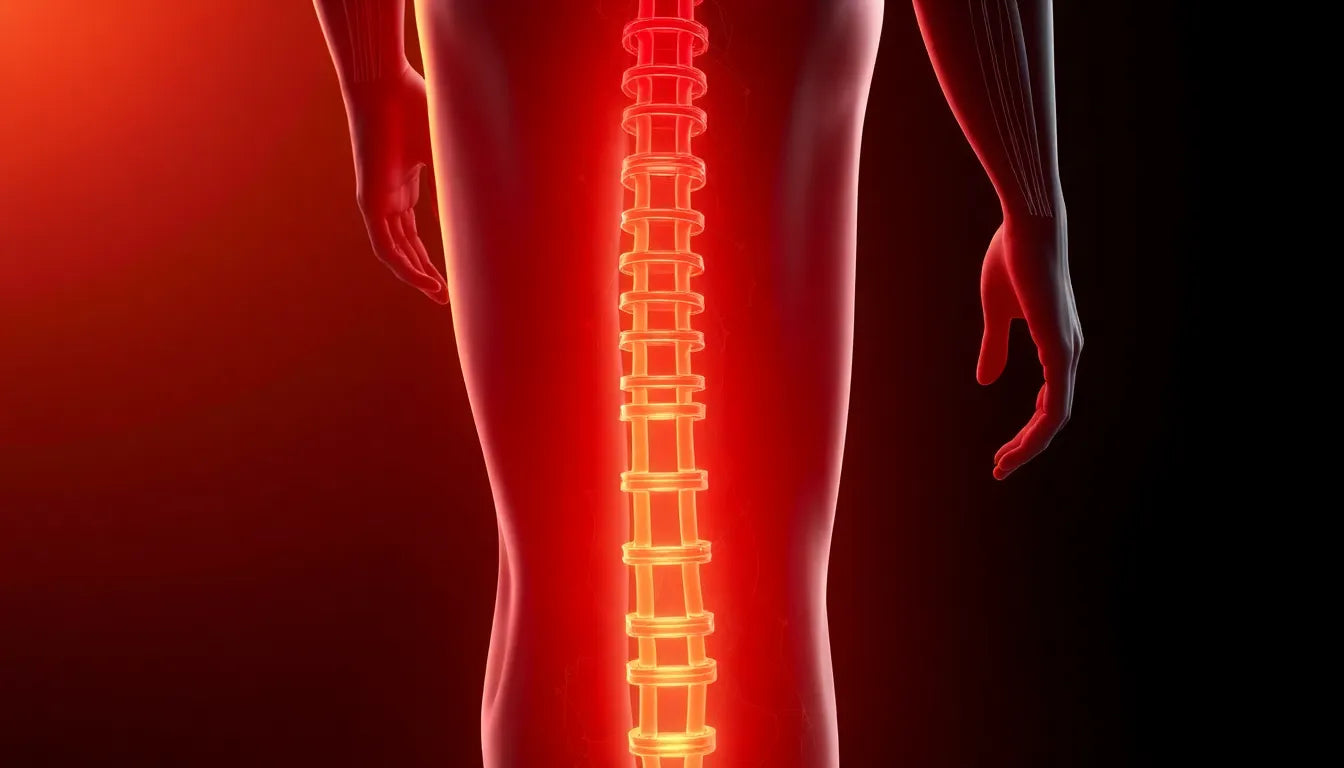In today's fast-paced world, the prevalence of herniated discs is on the rise, impacting countless individuals across various age groups. This condition can range from causing mild discomfort to severe pain and significant mobility issues, affecting one's quality of life and daily activities. Understanding what causes a herniated disc is crucial for both prevention and effective management, allowing individuals to take proactive steps towards maintaining spinal health.
understanding herniated discs
A herniated disc, often referred to as a slipped or ruptured disc, occurs when the soft, gel-like center of an intervertebral disc pushes through a crack in the tougher exterior casing. The spine is composed of a series of bones called vertebrae, cushioned by these intervertebral discs. These discs act as shock absorbers for the spine, facilitating movement and flexibility while protecting the spinal cord and nerves. When a disc herniates, it can press on nearby nerves, leading to pain, numbness, or weakness in the limbs.
importance of identifying causes
Recognizing the causes of herniated discs is essential for both individuals and healthcare professionals. By identifying the underlying factors that contribute to this condition, preventive measures can be implemented to reduce the risk of occurrence. Moreover, understanding these causes aids in developing targeted treatment plans that address the root of the problem, rather than merely alleviating symptoms. As we delve deeper into the topic, we will explore various triggers of herniated discs, providing insights into how lifestyle choices, genetic predispositions, and mechanical factors play a role in the development of this common spinal issue.
primary causes of herniated discs
As we delve into the underlying causes of herniated discs, it is essential to understand the main factors that contribute to this condition. A combination of age-related degeneration, physical strain, lifestyle choices, and genetic predispositions plays a significant role in the development of herniated discs.
age-related degeneration
One of the most common causes of herniated discs is the natural degeneration that occurs with aging. Over time, the intervertebral discs lose flexibility and water content, making them more susceptible to wear and tear. This degeneration is a natural part of the aging process, but it significantly increases the risk of herniation. Studies indicate that individuals over the age of 50 are particularly prone to disc degeneration, highlighting age as a critical factor in the development of herniated discs.
physical strain and injury
Physical strain and injury are also major contributors to herniated discs. Excessive strain from heavy lifting, sudden movements, or traumatic events like falls can lead to disc rupture. Interestingly, even minor movements such as twisting or bending, especially when performed incorrectly or with weakened discs, can cause herniation. It is crucial to be mindful of how everyday activities can impact spinal health, as seemingly insignificant actions may have long-term consequences.
lifestyle factors
Lifestyle choices play a pivotal role in the health of intervertebral discs. Improper lifting techniques, obesity, repetitive movements, a sedentary lifestyle, and smoking are all factors that can increase the risk of herniation. For instance, lifting heavy objects without using the legs for support can place undue stress on the back, leading to disc damage. Additionally, excess body weight puts extra pressure on the spine, while smoking reduces oxygen supply to discs, accelerating degeneration. The table below illustrates how these lifestyle factors specifically impact spinal health:
| Factor | Impact on Spinal Health |
|---|---|
| Improper lifting | Increases stress on discs, leading to potential rupture |
| Obesity | Exerts additional pressure on lower back discs |
| Repetitive movements | Causes wear and tear on spinal structures |
| Sedentary lifestyle | Weakens muscles supporting the spine |
| Smoking | Reduces oxygen supply, accelerating disc degeneration |
genetic component
Genetics can also influence the likelihood of developing herniated discs. Research has shown that individuals with a family history of this condition are more prone to experiencing it themselves. Genetic studies indicate that hereditary factors may interact with environmental influences, affecting disc health and increasing susceptibility to herniation. For example, a systematic review found that genetic factors play a significant role in disc degeneration, with a notable percentage of young patients showing a family history of herniated discs.
mechanical explanation of herniation
Understanding the mechanical process of herniation provides insight into how discs become compromised. The intervertebral discs consist of a soft, gel-like center called the nucleus pulposus, surrounded by a tougher outer ring known as the annulus fibrosus. Herniation occurs when the nucleus pulposus pushes through the annulus fibrosus, often due to increased internal pressure. This pressure can vary significantly during different activities, with simple actions like lifting with a rounded back causing a dramatic increase. Visualizing these changes can help individuals recognize the importance of maintaining proper posture and spinal alignment to prevent herniation.
In summary, while age, physical strain, lifestyle choices, and genetics are primary contributors to herniated discs, understanding these factors empowers individuals to make informed decisions about their spinal health. By addressing these causes, one can take proactive steps to reduce the risk of herniation and maintain a healthy spine.
risk factors and prevention strategies for herniated discs
Understanding the risk factors associated with herniated discs is crucial for effective prevention. Certain demographics and occupations are more susceptible to this condition, necessitating targeted strategies to mitigate risks. Men aged 20-50, frequent drivers, and individuals in physically demanding jobs are particularly vulnerable. These groups often experience increased spinal stress due to prolonged sitting, repetitive movements, or heavy lifting.
To reduce the risk of herniated discs, adopting ergonomic solutions and making lifestyle adjustments are essential. Ergonomic workplace setups, such as adjustable chairs and desks, can significantly alleviate spinal pressure. Additionally, incorporating regular exercise into daily routines strengthens the core muscles that support the spine, reducing the likelihood of injury. Practicing proper lifting techniques, such as bending at the knees and keeping the load close to the body, also plays a vital role in maintaining spinal health.
practical tips for maintaining spinal health
Preventing herniated discs involves a proactive approach to spinal care. Here are some practical tips to help maintain spinal health:
- Exercise regularly: Engage in activities that strengthen the back and abdominal muscles, such as swimming, walking, or yoga. These exercises enhance flexibility and support the spine.
- Maintain a healthy weight: Excess body weight adds stress to the spine, increasing the risk of disc herniation. A balanced diet and regular physical activity can help achieve and maintain a healthy weight.
- Use proper lifting techniques: Always lift objects with your legs, not your back. Keep the object close to your body and avoid twisting while lifting.
- Take breaks from prolonged sitting: If your job requires long hours of sitting, take frequent breaks to stand, stretch, and walk around to reduce spinal pressure.
- Quit smoking: Smoking decreases oxygen supply to the discs, accelerating degeneration. Quitting smoking can improve overall spinal health.
By following these tips, individuals can significantly reduce their risk of developing herniated discs and promote long-term spinal health.
frequently asked questions
What are the symptoms of a herniated disc?
Common symptoms of a herniated disc include pain, numbness, and weakness, particularly in the back, arms, or legs. The specific symptoms depend on the location of the herniated disc and the nerves affected. If you experience severe pain, loss of bladder or bowel control, or weakness, it is important to seek medical attention promptly.
Can herniated discs heal on their own?
In some cases, herniated discs can heal over time as the body reabsorbs the extruded material. Rest, physical therapy, and anti-inflammatory medications can aid in the healing process. However, severe cases may require medical intervention to manage pain and prevent further complications.
How can I prevent a herniated disc?
Prevention strategies include maintaining a healthy weight, exercising regularly, using proper lifting techniques, avoiding prolonged sitting, and quitting smoking. Early intervention and lifestyle adjustments can significantly reduce the risk of herniated discs.
Is surgery always necessary for herniated discs?
Surgery is not always necessary for herniated discs. Many cases can be managed with conservative treatments such as physical therapy, medications, and lifestyle modifications. Surgery is typically considered when conservative treatments fail to relieve symptoms or if there is significant nerve compression causing severe pain or neurological deficits.
How does lifestyle affect the risk of herniated discs?
Lifestyle choices have a significant impact on spinal health. Factors like obesity, smoking, and poor posture increase the risk of herniated discs. By adopting healthy habits and making ergonomic adjustments, individuals can reduce their risk and maintain a healthy spine.


















